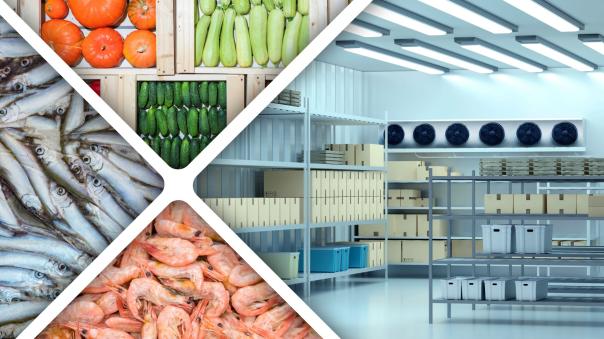
Caterers in the public sector rely on refrigeration systems to ensure the food and drink they provide are safe for people to consume and don’t go to waste. The accidental release of refrigerant gas leaks in cold storage, a long-standing issue with these systems, can endanger employees and lead to significant energy loss.
Unseen dangers
A leaking HVAC or refrigeration system poses significant challenges for public sector caterers. For organisations often tasked with feeding the sick, the elderly and school children, their failure to control temperatures effectively can lead to food being prepared that is unfit for human consumption.
Additionally, it can mean that food spoils or perishes and goes to waste, which is particularly problematic given the tight budgets public sector caterers have to work with. Another challenge is to prevent employees and others from coming into contact with these hazardous gases and being harmed as a result. Such issues also damage the reputation of the caterer, whether internal or contracted, and the public sector organisation that they serve.
Unfortunately, gas leaks begin causing problems long before they are generally noticed. In most cases in the UK, leaks are not detected until around 60% of the gas has already escaped. This puts employees working in the vicinity at risk of exposure, the harmful effects of which include headaches, nausea, coughing, skin and eye irritation and breathing difficulties.
At higher concentrations, particularly if people are trapped, the risks include loss of consciousness and even suffocation. The flammability of some refrigerant gases also makes leaks a significant fire hazard; a risk exacerbated if food is being prepared at high temperatures in nearby kitchens.
With public sector caterers working with narrow margins, the cost of running a refrigeration or HVAC system can directly affect their ability to meet financial targets or make profits. As leaking systems are more expensive to operate, it is important to rectify issues quickly.
However, The Carbon Trust informs us that the average system loses 20% of refrigerant gas every year. This reduces efficiency by approximately 11% and increases the costs of running a system by the same figure. By the time the leaks are noticed and 60% of gas has escaped, this means running costs will be 33% higher than a non-leaky system, which with today’s energy prices, could be a substantial sum.
F-gas compliance
Besides safety and cost, public sector caterers also need to comply with refrigerant gas regulations. With these gases having a global warming potential (GWP) over a thousand times greater than carbon dioxide, there are now stringent regulations in place to mitigate their environmental impact - and hefty fines for non-compliance.
Fluorinated gases (F-gases) with a GWP above 2,500 are banned for servicing or replenishing systems with a refrigerant charge equal to or above 40 tonnes of CO2, while gas leak detectors are mandatory for systems with F-gas equivalent to 500 tonnes of CO2. There are also rules for the frequency of gas leak checks, which vary between quarterly and annually, depending upon the equivalent CO2 tonnage. There is also the potential that the UK, which is presently reassessing its F-gas regulations, might follow the same path as the EU and ban the use of F-gases completely by 2050.
Gas detection technology today
As regulations for f-gases and refrigeration systems have evolved, a new generation of gas detection sensors has been developed. Fitted with sophisticated and intelligent technology, these sensors rapidly identify both hazardous and non-hazardous gases. Featuring meticulously accurate semiconductors or infrared sensing elements that are programmed to identify refrigerant gases, they can detect leaks even in large facilities, like industrial kitchens, or extreme environments, like cold storage units.
Equally important is their ability to be configured to detect predetermined air and refrigerant gas mixtures. This means that a detector’s sensitivity can be customised to match the specific environment in which it needs to function. At the same time, the detector’s integrated active filters can be calibrated to ignore any gases that are not of importance, a measure that can lengthen the lifetime of the sensor.
Identifying gas leaks is only one-half of the role these gas detectors are designed to fulfil. The other is to alert people in the area, keeping them out of danger until maintenance is carried out. The latest detectors are therefore fitted with LED indicators that highlight the presence and status of the sensors, together with audio-visual signalling alarms to alert staff. They have also been designed to integrate with other Building Management Systems, ensuring proactive monitoring can take place either centrally or online, and enabling improved communications and diagnostics.
Overall, the new generation of gas detection systems offers public sector caterers several important benefits with regard to their HVAC or refrigeration systems. They enhance the safety of employees, prevent food from going to waste because of ineffective temperature control, reduce energy wastage and its associated costs, and assist in compliance with F-gas regulations. As a result, they can play a valuable role in the catering industry.